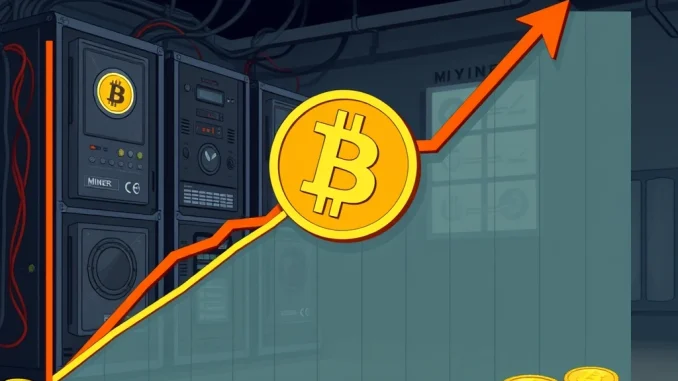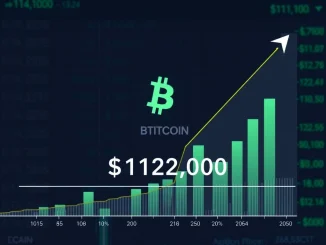
The world of cryptocurrency is always buzzing with activity, and recent reports have caught the attention of many in the space, particularly those focused on network health and mining economics. A significant development impacting the Bitcoin network has emerged: Bitcoin Transaction Fees have plummeted to levels not seen since 2022. This isn’t just a minor dip; it’s a substantial shift with potential implications for various participants in the Bitcoin ecosystem.
Understanding the Drop in Bitcoin Transaction Fees
Data from Luxor’s Hashrate Index, cited by Decrypt, reveals that so far this June, transaction fees are making up less than 1% of the total block rewards. This is a stark contrast to periods when fees constituted a much larger, and sometimes even dominant, portion of a miner’s earnings. Block rewards are the combination of newly minted BTC (the block subsidy) and the fees collected from transactions included in a block.
Historically, transaction fees fluctuate based on network activity and congestion. When the network is busy, users are willing to pay higher fees to ensure their transactions are processed quickly. Conversely, during periods of lower demand, fees tend to drop. The current low levels suggest reduced competition for block space.
Here’s a simple breakdown of the block reward components:
- Block Subsidy: Fixed amount of new BTC created with each block (currently 3.125 BTC after the latest halving). This is the primary source of revenue for miners.
- Transaction Fees: Sum of all fees paid by users for transactions included in that block. This component varies greatly.
- Total Block Reward: Block Subsidy + Transaction Fees.
The fact that fees are now below 1% of this total indicates a significant decline in the fee component specifically.
The Impact on Bitcoin Mining Revenue
For Bitcoin miners, transaction fees are a crucial part of their income, supplementing the block subsidy. While the subsidy is predictable (halving roughly every four years), fees provide variable revenue that can significantly boost profitability, especially during peak network usage periods (like the Ordinals craze). A drop in fees directly impacts Bitcoin Mining Revenue.
Consider this:
- Before the recent halving in April 2024, the block subsidy was 6.25 BTC. Fees sometimes added substantial amounts on top of this.
- Now, the subsidy is 3.125 BTC. Fees are even more critical for maintaining profitability, particularly for miners with high operational costs (electricity, hardware, cooling).
With fees contributing less than 1%, miners are relying almost entirely on the block subsidy. This puts pressure on less efficient miners and could potentially lead to some reducing operations or even shutting down if the price of Bitcoin doesn’t compensate for the lower revenue streams. The data from Luxor’s Hashrate Index Data clearly underscores this challenge for the mining industry.
What Could Be Causing the Decline?
Several factors can contribute to a decrease in Bitcoin transaction fees:
- Reduced Network Congestion: Fewer transactions or smaller transaction sizes mean less competition for block space.
- Lower Demand for Priority: Users may be less urgent about getting transactions confirmed quickly, opting for lower fees.
- Decline in Specific Use Cases: Activity from phenomena like Ordinals (inscribing data on satoshis), which often drove up fee competition, may have decreased.
- Increased Use of Layer 2 Solutions: More transactions potentially happening off the main chain (e.g., on the Lightning Network) would reduce mainnet transaction volume and fee pressure.
While the exact mix of causes requires deeper Crypto Market Analysis, the outcome is clear: lower fees for users, but also lower revenue for miners.
Why BTC Block Rewards Matter Beyond Mining
While this news primarily affects miners, the composition of BTC Block Rewards is important for the long-term security model of Bitcoin. As block subsidies continue to halve over time, transaction fees are expected to become the dominant source of revenue for miners. This fee revenue is what incentivizes miners to dedicate computing power to secure the network, process transactions, and make 51% attacks economically infeasible.
The current low fee environment, while perhaps temporary, highlights the ongoing transition Bitcoin faces. The network needs sufficient transaction volume and fee generation in the future to maintain robust security solely through fees once the block subsidy diminishes to negligible levels.
Looking Ahead: Will Fees Rebound?
Predicting transaction fees is challenging as it depends heavily on future network activity and market conditions. A surge in Bitcoin’s price, renewed interest in specific on-chain activities like Ordinals or token protocols, or increased overall network usage could all lead to higher fees again.
For now, however, the data from sources like Luxor’s Hashrate Index indicates a significant dip that miners must navigate. This period serves as a reminder of the dynamic nature of the Bitcoin network and the evolving economics of its security mechanism.
Conclusion
The recent drop in Bitcoin Transaction Fees to their lowest point since 2022 is a notable event in the crypto space. It signifies reduced competition for block space and, more significantly, puts pressure on Bitcoin Mining Revenue. With fees contributing less than 1% to BTC Block Rewards, miners are increasingly reliant on the block subsidy, which was recently halved. While potentially beneficial for users seeking lower transaction costs, this trend, highlighted by Hashrate Index Data and broader Crypto Market Analysis, underscores the challenges and evolving economics within the Bitcoin mining sector and raises questions about the long-term transition towards a fee-reliant security model.



